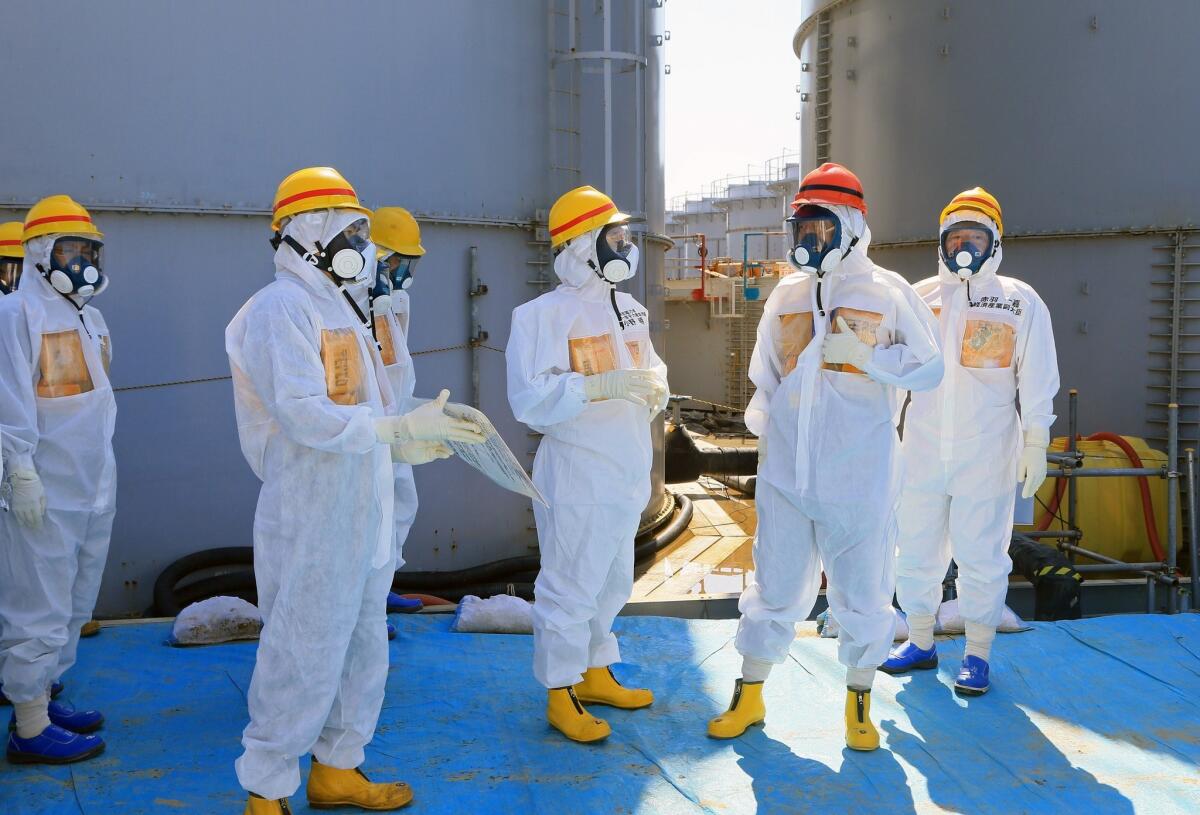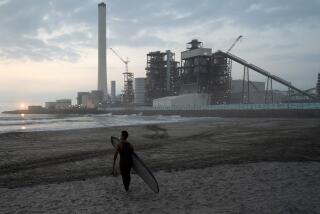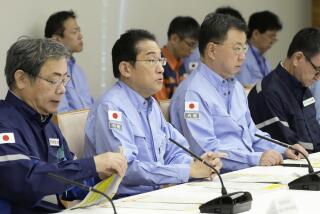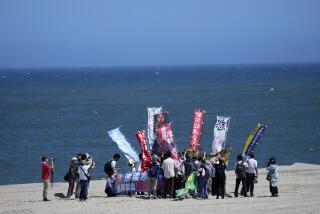Japan premier urges full decommissioning of Fukushima nuclear site

- Share via
Japanese Prime Minister Shinzo Abe toured the crippled Fukushima Daiichi nuclear power complex Thursday and urged its owner to abandon hopes of restarting the only two intact reactors and concentrate instead on unfinished cleanup operations, Japanese media reported.
Three of Fukushima’s six reactors suffered meltdowns after the March 11, 2011, earthquake and tsunami, and the fuel-cooling containment pool was seriously damaged at a fourth unit.
Japan is currently nuclear-free, as all 50 of its reactors are closed for maintenance, repairs, safety checks or inoperability.
But Fukushima owner Tokyo Electric Power Co., like most Japanese utilities with nuclear production facilities, has maintained hope of restarting its undamaged reactors if and when a new independent regulatory agency gives the green light after inspection.
Abe told journalists after his three-hour tour of Fukushima that he had urged TEPCO President Naomi Hirose to decommission the surviving No. 5 and No. 6 reactors and set a deadline for completing purification of radiation-contaminated water stored at the plant, NHK television reported.
Hirose told Abe that his utility board would decide by the end of the year what to do with the two reactors. He also said the water cleanup would be finished by March 2015, NHK said.
For more than two years, fresh groundwater has become contaminated after flowing into the damaged nuclear site, the Asahi Shimbun newspaper reported. Cleanup crews have been diverting the tainted water into storage tanks and have created a mass of 1,000 tanks containing 350,000 tons of water waiting to be recycled and then used for cooling, the newspaper said.
TEPCO officials delayed the water cleanup for fear the extra $10 billion needed to recycle the water and install an impermeable shield between the plant and the groundwater inflows would have bankrupted the utility, Asahi Shimbun reported. It quoted two former government officials, now in the legislature, who were closely involved with the disaster response.
The newspaper quoted an unnamed TEPCO official as denying that the water project was stalled for cost reasons, saying the delay was due more to it being “unclear whether it was feasible” to build the protective wall between the damaged plants and the aquifers.
Japan relied on nuclear energy for about one-third of its electricity needs before the earthquake and tsunami hit. The country has since had to boost fuel imports to replace the lost energy, resulting in a sharp rise in its trade deficit.
Japanese customs data released Thursday show an 18% increase in imported fuel costs in August from a year earlier. Energy purchases abroad have been the main driver of the country’s 16% rise in imports over the last year.
A year ago, the government announced a dramatic turn in its energy policy, vowing to make the densely populated nation nuclear-free by the 2030s. But Abe’s conservative government, which gained power in December, has backed away from the previous government’s commitment and signaled that some nuclear power generation will resume once plants are determined to be in compliance with improved safety standards.
ALSO:
Egyptian forces clash with militants near Cairo
Pope Francis takes issue with church focus on gays, abortion
McCain blasts Putin in Pravda op-ed, says Russians deserve better
Twitter: @cjwilliamslat
More to Read
Sign up for Essential California
The most important California stories and recommendations in your inbox every morning.
You may occasionally receive promotional content from the Los Angeles Times.











